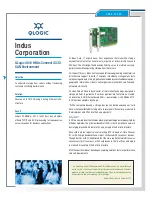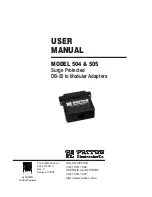
Adapter configurations 64
•
DRIVERNAME
o
Possible value: BXND20X$
o
This field is case sensitive
•
LINESPEED
o
Possible values: 10, 100, or 1000
o
Default: AUTONEG
•
BUSNUM
o
Possible values: the bus slot number the NC37xx/NC380x device is on
o
Default: the bus slot number occupied by one of NC37xx/NC380x devices in the system
•
DEVNUM
o
Possible value: the device number the NC37xx/NC380x device is on
o
Default: the device number occupied by one of NC37xx/NC380x devices in the system
•
FUNCNUM
o
Possible values: the function number the NC37x/NC380x device is on
o
Default: the function number occupied by one of NC37x/NC380x devices in the system
•
DUPLEX
o
Possible values: half or full (LineSpeed is required when this keyword is used)
o
Default: full
•
NODEADDRESS
o
Possible values: 6 hex bytes looking like "0A0B0C0D0E0F"
o
Default: the MAC address for the selected NC37xx/NC380x device
Known limitations:
For Windows Server 2003 or Window Server 2003 x64 self-installation, a smartdrv driver needs to be
loaded. Otherwise, bad performance or even incorrect I/O write errors might occur.
PXE configuration: HP NC-series Broadcom and Multifunction
adapters
NOTE:
PXE is not supported on the NC150T adapter.
The Pre-boot Execution Environment (PXE) of HP adapters has been upgraded to allow PXE functions to
work with the HP ProLiant servers.
The HP NC32xx, NC37xx, NC380x, NC1020, NC6770, and NC77xx Gigabit Server Adapters have
PXE support. PXE is a software protocol that allows your networked computer to boot with the images
provided by remote servers across the network. PXE operates in a client/server environment. A network
consists of one or more boot servers that provide boot images to multiple computers through the network.
The PXE driver complies with the PXE-2.1 specification. The PXE driver is released with both monolithic
and split binary images. This feature provides flexibility to users in different environments in which the
motherboard may or may not have built-in base-code.
















































